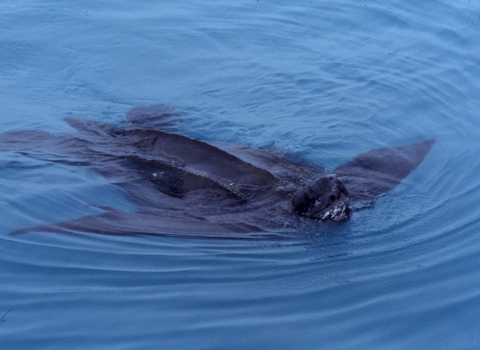
Leatherback turtle ©Mike Dains
Leatherback turtle
A giant of the sea turtle world, leatherback turtles are ocean wanderers searching the seas for jellyfish. Unlike other sea turtles, leatherback turtles don’t mind the cold! This means they can dive to great depths where the water is a lot colder to get first pick of all the deep-sea jellyfish.
Scientific name
Dermochelys coriaceaWhen to see
May to SeptemberSpecies information
Category
Statistics
Length: Up to 2.5m Weight: 250-700kg Lifespan: up to 100 yearsVulnerable, with many populations critically endangered and at risk of extinction. In the UK, they are a Priority Species under the UK Post-2010 Biodiversity Framework.
